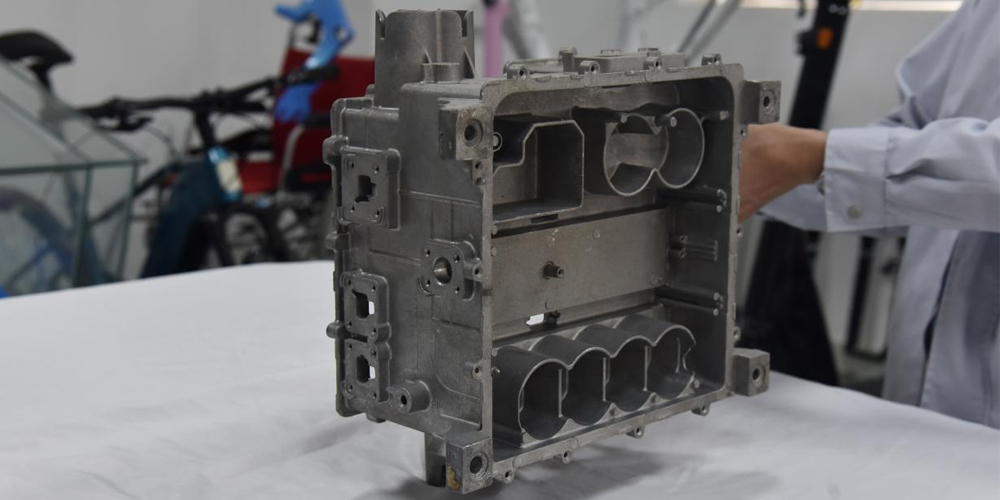Die casting is a popular manufacturing process that involves the production of metal parts by forcing molten metal into a die or mold under high pressure. This process offers several advantages, such as cost-effectiveness, fast production rates, and the ability to create complex shapes with high precision. Die casting finds its applications in various industries, including automotive, aerospace, electronics, and more.
The Die Casting Process
The die casting process consists of several steps, starting with the preparation of the mold. The mold, also known as a die, is typically made of steel and consists of two halves. These halves are carefully machined to form cavities that will shape the desired parts.
Once the mold is ready, the next step is to preheat it to a specific temperature to ensure proper casting. The molten metal, usually aluminum or zinc alloys, is then injected into the mold using a high-pressure injection system. The pressure is maintained until the metal solidifies inside the mold.
After solidification, the mold is opened, and the newly formed part, known as the casting, is removed. The casting may require additional post-processing operations, such as trimming excess material, deburring, or surface finishing, to achieve the desired final product.
Vorteile des Druckgusses
Die casting offers several advantages over other manufacturing processes, making it a preferred choice for many industries. One of the significant advantages is the ability to produce complex shapes with high accuracy and repeatability. The molds used in die casting allow for intricate designs and tight tolerances, ensuring consistent quality across multiple parts.
Furthermore, die casting offers excellent dimensional stability, meaning that the parts produced are consistent in size and shape. This is crucial, especially in industries like automotive and aerospace, where precise fitting and assembly are essential.
Another advantage of die casting is its high production rate. The process allows for fast cycle times, enabling manufacturers to produce a large number of parts within a short period. This makes die casting a cost-effective solution for mass production, especially when compared to other methods like machining or forging.
Applications of Die Casting
Die casting has a wide range of applications across various industries. In the automotive industry, die-cast parts are commonly used in engine components, transmission parts, and structural elements. The lightweight and high strength-to-weight ratio of die-cast parts make them ideal for improving fuel efficiency and performance.
In the aerospace industry, die-cast parts are used in aircraft engines, airframes, and other critical components. The ability to produce complex shapes and maintain tight tolerances makes die casting suitable for aerospace applications where reliability and safety are paramount.

Die casting also finds its applications in the electronics industry. The process is used to manufacture connectors, housings, and heat sinks for electronic devices. The excellent electrical conductivity of die-cast parts, coupled with their ability to dissipate heat efficiently, makes them suitable for electronic applications.
Other industries where die casting is widely used include consumer goods, plumbing, and telecommunications. From kitchen appliances to bathroom fixtures to mobile phone casings, die-cast parts can be found in various everyday items.
Abschluss
Die casting is a versatile manufacturing process that offers numerous advantages, including cost-effectiveness, fast production rates, and the ability to create complex shapes with high precision. Its applications span across various industries, from automotive and aerospace to electronics and consumer goods. With ongoing advancements in technology and materials, die casting continues to evolve, providing innovative solutions for the production of high-quality metal parts.
-

- Fahrradrad aus Magnesiumlegierung mit CNC-Bearbeitung und Oberflächenveredelung
-

- OEM-Druckgusskomponenten für Automobil-Sitzrahmen
-

- OEM-Druckgusshersteller produzieren Magnesiumlegierungsräder für Kinderlaufräder
-

- Factory Custom China Bmx Cycles Road Sport Kids Fahrrad 12 16 18 20 Zoll Cycle Mtb für Kinder 6-10 Jahre
-

- Hochpräzise Magnesium-Thixomolding-Komponenten UAV-Abdeckung
-

- Magnesiumlegierung Thixomolding-Power-Batter-Gehäuse

 0086-750-5616188
0086-750-5616188 +86 13392089688
+86 13392089688 sales@zhongmei-tech.com
sales@zhongmei-tech.com







